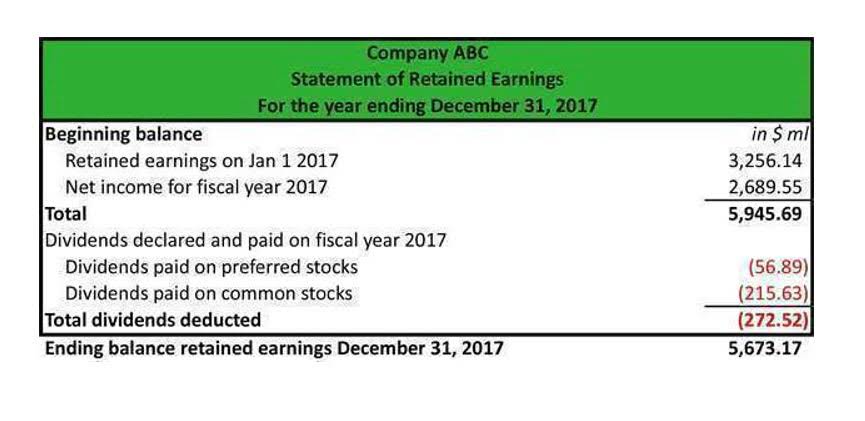
Modern accounting software has largely made these difficulties a thing of the past, as many of the steps are now automated. As a business owner, you know the importance of keeping accurate records. You’ll also know that this isn’t https://www.bookstime.com/articles/how-to-calculate-shares-outstanding always an easy task – in the daily hustle and bustle, it’s easy for transactions to get lost and numbers to get entered incorrectly. Connect all your business tools, sync data, link bank accounts and work from anywhere, 24/7.

Starting with an incorrect opening balance:

Sheetgo is a powerful automation tool that can significantly streamline the bank reconciliation process. Its Finance solution includes a bank reconciliation module which automates the comparison of financial records with bank statements. In doing so, it reduces the time and effort required for manual reconciliation. Interest is automatically deposited into a bank account after a certain period of time. So the company’s accountant prepares an entry increasing the cash currently shown in the financial records. After adjustments are made, the book balance should equal the ending balance of the bank account.
Step 2: Compare deposits
Similarly, it is a good practice for companies to maintain a separate bank book for each corresponding bank account. Companies need to reconcile their accounts to prevent balance sheet errors, check for possible fraud, and avoid adverse opinions from auditors. Companies generally perform balance sheet reconciliations each month, after the books are closed for the prior month. This type of account reconciliation involves reviewing all balance sheet accounts to make sure that transactions were appropriately booked into the correct general ledger account.
Helpful Tips for Bank Reconciliation Adjustments
Guide to file GSTR-9 on GST portal – ClearTax
Guide to file GSTR-9 on GST portal.
Posted: Mon, 08 Apr 2019 13:55:10 GMT [source]
After adjusting the balances as per the bank and as per the books, the adjusted amounts should be the same. If they are still not equal, you will have to repeat the process of reconciliation again. Deposits in transit are amounts that are received and recorded by the business but are not yet recorded by the bank. Reconciliation serves an important purpose for businesses and individuals in preventing accounting errors and reducing the possibility of fraud. Businesses are generally advised to reconcile their accounts at least monthly, but they can do so as often as they wish.

For smaller companies, it’s common to reconcile bank statements during the monthly or quarterly close process. However, there are situations where a bank reconciliation might be necessary at the earliest. For example, if a business identifies any suspicious activity or unidentifiable transactions, it’s essential to prepare a bank reconciliation immediately. Similarly, if customer payment checks on the balance sheet do not match bank records, a cross-check is necessary. As mentioned above, timing differences do not require any adjustments in the bank book balance. Therefore, these items need to be part of the bank reconciliation statement only.
- If not, add the missing deposits to your records and your total account balance.
- The next step in the bank reconciliation process is to adjust unrecorded differences.
- And when they turn to the global financial system for assistance, they come, often, empty-handed.
- To quickly identify and address errors, reconciling bank statements should be done by companies or individuals at least monthly.
- Cash does not include postage stamps, IOUs, time CDs, or notes receivable.
- When you “reconcile” your bank statement or bank records, you compare it with your bookkeeping records for the same period, and pinpoint every discrepancy.
Generally, you want to reconcile your bank accounts every time you receive a statement from your bank – typically, that’s monthly. If a bank reconciliation is off by a very small amount, it is usually due to rounding errors. Similarly, it can also be because the which of the following is not a step in preparing a bank reconciliation? preparer of the bank reconciliation has missed some expense from the bank statement. Generally, it is a good idea to prepare the bank reconciliation again and pay attention to even small amounts and not rounding off figures obtained from the bank statement.
To see your business as it really is
- Reconciliation also confirms that accounts in a general ledger are consistent and complete.
- The company prepares a bank reconciliation to determine its actual cash balance and prepare any entries to correct the cash balance in the ledger.
- Its Finance solution includes a bank reconciliation module which automates the comparison of financial records with bank statements.
- As with deposits, take time to compare your personal records to the bank statement to ensure that every withdrawal, big or small, is accounted for on both records.
- For her first job, she credits $500 in revenue and debits the same amount for accounts receivable.
- The goal of bank account reconciliation is to ensure your records align with the bank’s records.
If you find any bank adjustments, record them in your personal records and adjust the balance accordingly. If you’ve been charged a fee in error, contact your bank to resolve the issue. Note that the transactions the company is aware of have already been recorded (journalized) in its records. However, the transactions that the bank is aware of but the company is not must be journalized in the entity’s records. It is helpful for a company to have a separate general ledger Cash account for each of its checking accounts.
Adjusting the Bank Statement Balance
- Reconciliation is an accounting procedure that compares two sets of records to check that the figures are correct and in agreement.
- Variances between expected and actual amounts are called “cash-over-short.” This variance account is kept and reconciled as part of the company’s income statement.
- But, you will record such transactions only in your business’ cash book only when you receive the bank statement.
- Companies need to reconcile their accounts to prevent balance sheet errors, check for possible fraud, and avoid adverse opinions from auditors.
- After checking all the critical items, adjust the cash balances to account for all expenses and transactions.
- You first need to determine the underlying reasons responsible for the mismatch between balance as per cash book and passbook.
